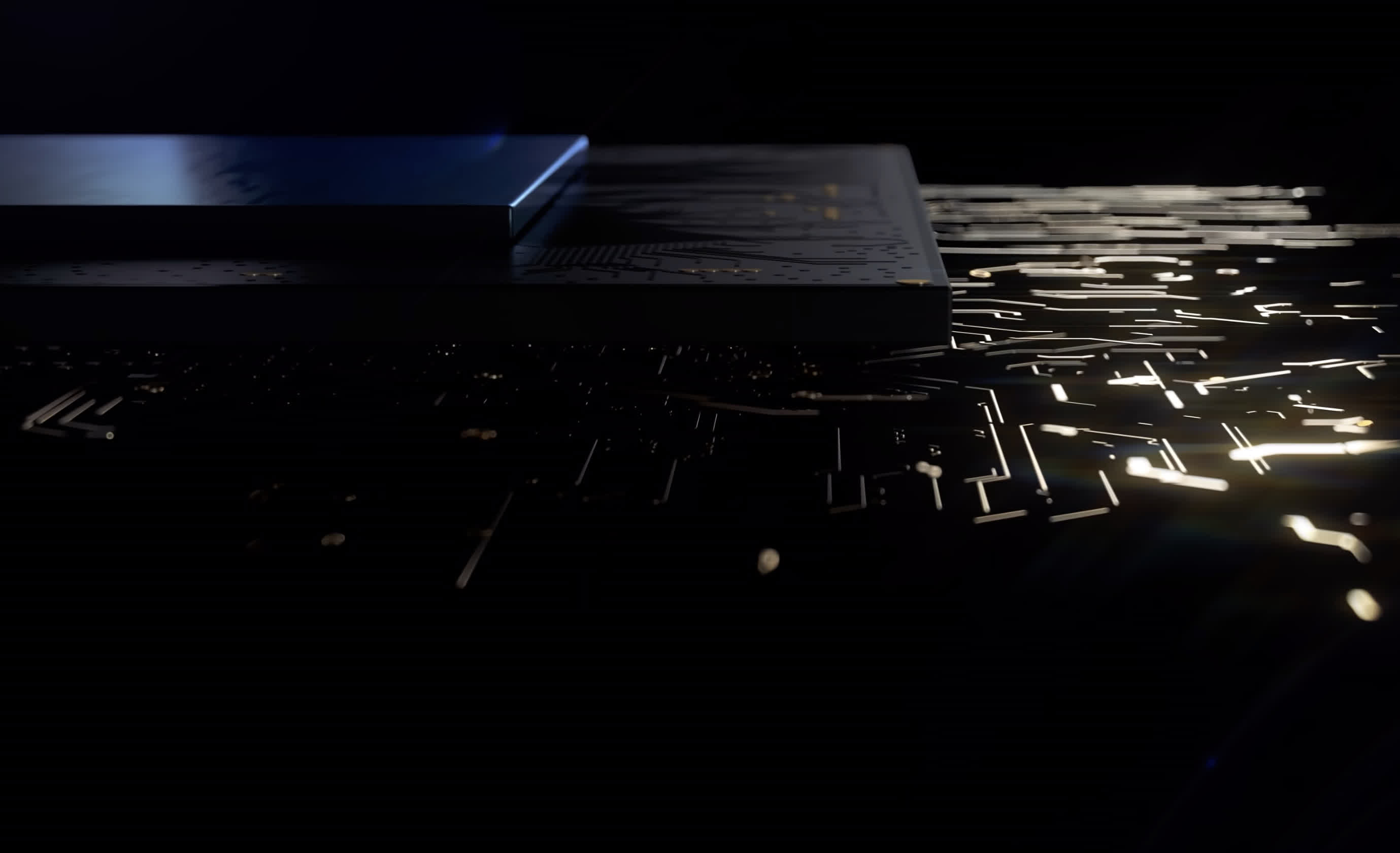In context: Intel's Arc A-series family of discrete GPUs may turn out to be this year's most underwhelming hardware release. And that's despite the company's best effort to enter a challenging market where Nvidia dominates the high-end segment and AMD provides alternatives for budget-minded gamers. The Arc 7 laptop GPUs have yet to make their debut, but they're officially aimed at Nvidia's more modest offerings from the Ampere range.

Earlier this week, a review of the Arc A380 desktop graphics card revealed why Intel isn't keen on releasing it worldwide. Performance is worse than AMD's slowest RX 6000 series card and even Nvidia's GTX 1650 which made its debut three years ago. Part of this is to be expected, as Nvidia and AMD have been perfecting their drivers for years and a first-gen discrete GPU architecture from Intel is unlikely to challenge their current offerings on anything other than price or energy efficiency.
According to Tom's Hardware, Intel recently sent out review guidelines for its mobile Arc Alchemist GPUs and how they perform in modern AAA games. Specifically, the company is sharing information about the Arc A770M and Arc A730M GPUs, which are based on the ACM-G10 die. Intel seems to be positioning them as alternatives to Nvidia's RTX 3050 Ti and RTX 3060 laptop GPUs, which are entry-level offerings in the Ampere range.
The A730M has 24 Xe cores running at up to 1,100 MHz, 24 ray tracing units, and 12 gigabytes of GDDR6 paired over a 192-bit interface. Its bigger brother, the A770M, has 32 Xe cores running at 1,650 MHz, 32 ray tracing units, and 16 gigabytes of VRAM connected via a 265-bit interface.
As with Nvidia's RTX 30 series laptop GPUs, Intel's Arc A730M and 770M GPUs will come with varied TGP ratings that will be configured by manufacturers based on their design goals for particular laptop models. They range between 80 to 120 watts for the A730M and 120 to 150 watts for the A770M.
| Game (Settings) | RTX 3050 Ti | Arc A730M | RTX 3060 | Arc A770M |
|---|---|---|---|---|
| Assassin's Creed Valhalla (High) | 38 fps | 50 fps | 74 fps | 69 fps |
| Borderlands 3 (Ultra) | 45 fps | 50 fps | 60 fps | 79 fps |
|
Control (High) |
42 fps | 62 fps | 70 fps | 89 fps |
| Cyberpunk 2077 (Ultra) | 39 fps | 49 fps | 54 fps | 68 fps |
| Death Stranding (Ultra) | 89 fps | 87 fps | 113 fps | 102 fps |
| Dirt 5 (High) | 64 fps | 61 fps | 83 fps | 87 fps |
| F1 2021 (Ultra) | 68 fps | 86 fps | 96 fps | 123 fps |
|
Far Cry 6 (Ultra) |
63 fps | 68 fps | 80 fps | 82 fps |
| Gears of War 5 (Ultra) | 58 fps | 52 fps | 72 fps | 73 fps |
| Horizon Zero Dawn (Ultimate Quality) | 63 fps | 50 fps | 80 fps | 68 fps |
| Metro Exodus (Ultra) | 39 fps | 54 fps | 53 fps | 69 fps |
| Red Dead Redemption 2 (High) | 46 fps | 60 fps | 66 fps | 77 fps |
|
Strange Brigade (Ultra) |
98 fps | 123 fps | 134 fps | 172 fps |
| The Division 2 (Ultra) | 63 fps | 51 fps | 78 fps | 86 fps |
| The Witcher 3 (Ultra) | 96 fps | 101 fps | 124 fps | 141 fps |
| Total War Saga: Troy (Ultra) | 48 fps | 66 fps | 71 fps | 86 fps |
| Watch Dogs Legion (High) | 59 fps | 71 fps | 77 fps | 89 fps |
Intel's benchmarks suggest its A730M and A770M GPUs can surpass the RTX 3050 Ti and RTX 3060 in terms of 1080p performance across a variety of games by as much as 48 percent. However, Team Blue admits to lower performance in certain titles like Death Stranding and Horizon Zero Dawn, so the average performance advantage works out to just 12-13 percent.
The problem with these results is that Intel didn't specify the TGP of the Arc GPUs it used for testing, while the guidelines indicate the RTX 3050 Ti with a TGP of 60 watts and the RTX 3060 with a TGP of 85 watts. Both figures are lower than the minimums for the Arc A730M and A770M, and significantly lower than the maximum configurable TGPs, making it hard to judge the merits of the Alchemist architecture when compared to the competition.
The Intel Arc GPUs are equipped with more VRAM than their supposed Nvidia counterparts, which is a positive. They may also be capable of better performance when configured to use more power, but the same would be true of the RTX 3050 Ti and RTX 3060. Public Intel documentation suggests that Arc Alchemist GPUs need Resizable BAR to perform their best, and that feature may not have been enabled on the MSI Pulse G66 (RTX 3060) and Asus ROG Zephyrus M16 (RTX 3050 Ti) test machines.
In any case, it looks like Intel isn't interested in competing at the higher-end with this first generation of discrete GPUs. The company does have an Arc Limited Edition graphics card for desktop systems that might feature higher clocks than the A770M, but it is unclear whether it will even approach RTX 3070-levels of performance as rumored.
https://www.techspot.com/news/95068-official-intel-arc-a730-a770m-benchmarks-suggest-rtx.html